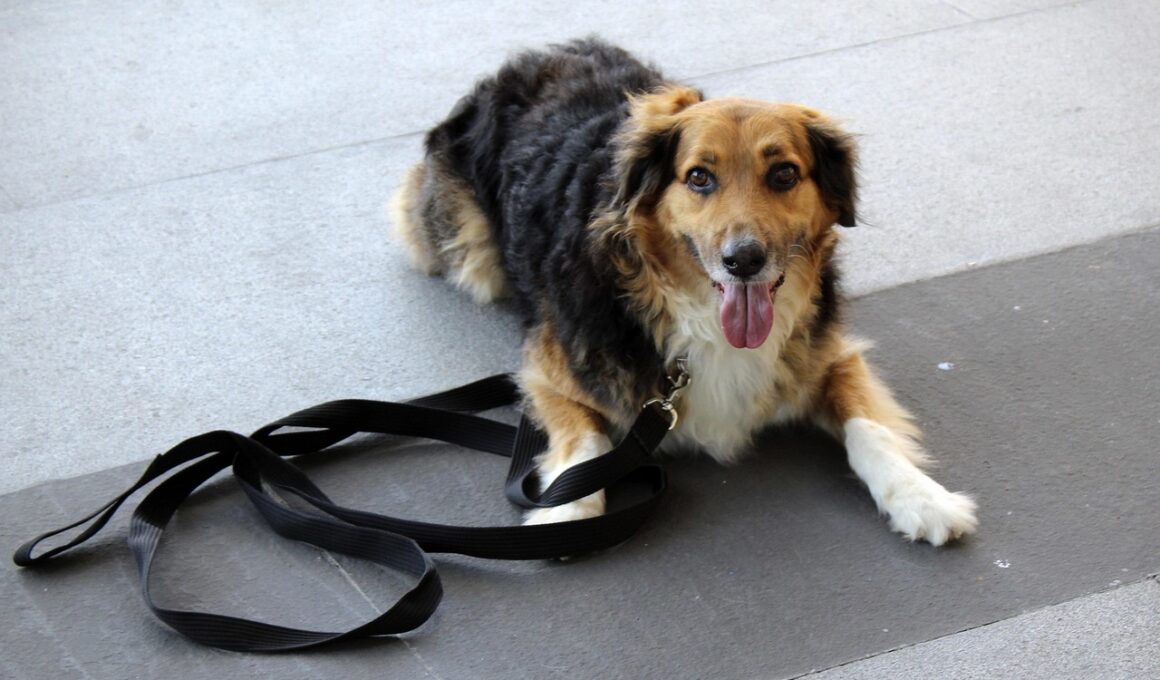Using Clicker Training to Teach Tricks and Fun Behaviors
Clicker training is an effective method for teaching dogs new tricks and fun behaviors. This positive reinforcement technique uses a small handheld device that makes a distinct sound, known as a click. When a dog performs a desired action, the trainer clicks the device and immediately follows up with a reward, typically a treat. This process creates a clear connection in the dog’s mind between the action and the reward. The sound of the clicker becomes a signal that the dog did something right, making them eager to repeat the action in the future. Clicker training can be beneficial for both puppies and adult dogs. It enhances communication between the owner and the dog. Additionally, it helps to build a strong bond based on trust and understanding. Further, this method allows dogs to learn quickly without confusion. It also reduces frustration for both parties involved. As the dog learns, the owner can gradually fade out the treats and reward the good behavior with praise. Overall, clicker training offers an engaging approach to dog training, ensuring a fun experience for the dog and the owner alike.
To start clicker training, gather a few essential items. First, choose a clicker that feels comfortable in your hand. Next, select treats that your dog enjoys and can easily digest. It’s crucial to use high-value rewards, especially when teaching new commands. To begin the training, find a quiet space without distractions. This environment helps your dog focus on learning. Start by clicking and treating whenever your dog offers a desired behavior, like sitting or lying down. Gradually introduce new tricks, like rolling over or playing dead. Continuously reinforce these behaviors with clicks and treats. Remember, patience is key. Consistent practice and repetition will facilitate the learning process. Additionally, keep training sessions short, ideally around five to ten minutes. This duration prevents your dog from losing interest and provides ample opportunity for success. As your dog masters each trick, begin to shape their behavior further by adding new commands. Modify the rewards to keep your dog engaged and excited. You can also switch up the treats to maintain motivation. Clicker training thus remains a fun and rewarding process for both you and your furry friend.
Benefits of Using Clicker Training
One of the primary advantages of clicker training is its effectiveness in teaching complex behaviors. Because this method focuses on positive reinforcement, dogs become more willing to learn and explore. Clicker training also boosts a dog’s confidence as they successfully learn new tricks. In addition, this technique can correct undesired behaviors without being harsh or punitive. Encouraging your dog with rewards fosters a happy learning environment. Furthermore, dogs trained with clickers tend to retain information better than those trained with traditional methods. The click sound serves as immediate feedback, making it easier for them to understand what is expected. Another benefit is that this method can be used to modify unwanted behaviors by rewarding the absence of the behavior. For example, if your dog tends to jump on guests, reinforce calm sitting when someone enters the house. Clicker training can also be used during obedience training and agility training for more efficient learning sessions. Overall, the adaptability of clicker training makes it a valuable tool in a wide variety of dog training scenarios.
The process of clicker training can vary depending on each dog’s personality and learning pace. Some dogs may require a shorter time frame to grasp new commands, while others need prolonged practice sessions. Start training in a distraction-free area, gradually increasing challenges as your dog becomes confident. Always observe your dog’s body language for signs of stress or frustration. Keeping a close watch can help adjust your approach as needed to ensure constant engagement and positivity. Besides basic obedience, clicker training can facilitate complex behaviors, like navigating agility courses or solving puzzles. As dogs progress, owners can incorporate more advanced tricks, keeping the sessions lively and enjoyable. Additionally, it is essential to mix training with playtime, allowing the dog to associate learning with fun. You might consider involving family members in training as well. This helps the dog become acclimatized to different handlers. Overall, maintaining a balanced approach will yield the best training results. Each dog’s journey through clicker training is unique, offering opportunities for creativity and individual bonding moments.
Common Mistakes to Avoid
While clicker training can be a useful method, there are common mistakes that trainers should avoid. Firstly, inconsistency in clicking and treating can confuse your dog. If the click doesn’t always follow the desired behavior, they might not understand what action is being rewarded. Make sure to click immediately after the good behavior occurs for the best results. Another frequent error occurs when owners use the clicker too late or fail to reward quickly. This mistake can lead to anxiety or frustration in the dog, hindering the learning process. Additionally, avoid varying the quality and timing of rewards. If treats aren’t motivating enough, your dog’s willingness to participate will decline. Similarly, never use the clicker as a corrective tool. This technique is meant to promote positive behavior, not punish. Lastly, ensure sessions are not overly long. Training should remain fun, and dogs can lose interest quickly. Keep lessons engaging to sustain enthusiasm throughout the process. By sidestepping these common pitfalls, you can enhance your dog’s experience and improve their learning effectiveness while solidifying your bond.
Once your dog has mastered a few tricks, incorporating them into everyday life can enhance the training’s effectiveness. You might practice fun indoor games that utilize the newly acquired skills. For instance, asking your dog to perform tricks during dinner time can reinforce behavior while making mealtime engaging. Tricks can also serve as an icebreaker in social situations, further showcasing your dog’s abilities. Sharing your dog’s skills with friends seamlessly integrates training into daily life. Additionally, participate in community events, where public demonstrations allow you to showcase your dog’s tricks, boosting their confidence. Training doesn’t have to be limited to formal sessions; spontaneous practice throughout the day fosters better learning outcomes. Cold weather conditions can also provide unique opportunities for training, like teaching a dog to navigate while on a walk. Experimenting with novel situations promotes creativity in your dog’s learning and problem-solving skills. Always keep a variety of treats on hand while training in public areas to enhance motivation and engagement. Making training versatile can lead to a well-rounded, adaptable dog that thrives in various environments and situations.
Conclusion: Strengthening Your Bond
Clicker training is a transformative method with benefits that extend beyond teaching tricks. It enhances communication and strengthens the bond you share with your dog. The clarity and consistency your dog experiences during training create trust and understanding. Moreover, the joy of learning new tricks fosters a positive atmosphere for both partners. Tracking progress and celebrating small milestones together can significantly deepen your relationship. Ultimately, the skills gained through clicker training can lead to a more obedient, well-rounded companion. This method allows you to manage behavioral issues kindly and effectively. Additionally, being patient and adaptable during training sessions encourages dogs to express their personalities and gives them the confidence to thrive. Regular practice and continued use of the clicker will suffice to ensure lasting positive results. If you maintain an open-minded approach and foster a fun learning environment, you’ll teach your dog new behaviors with ease. Whether training your dog for fun or incorporating important commands into daily life, clicker training can bridge that gap and add joy to your companionship. Invest time, and enjoy the journey you embark on together with your furry friend.
This method can be beneficial for both puppies and adult dogs. It enhances communication between the owner and the dog. Additionally, it helps to build a strong bond based on trust and understanding.


